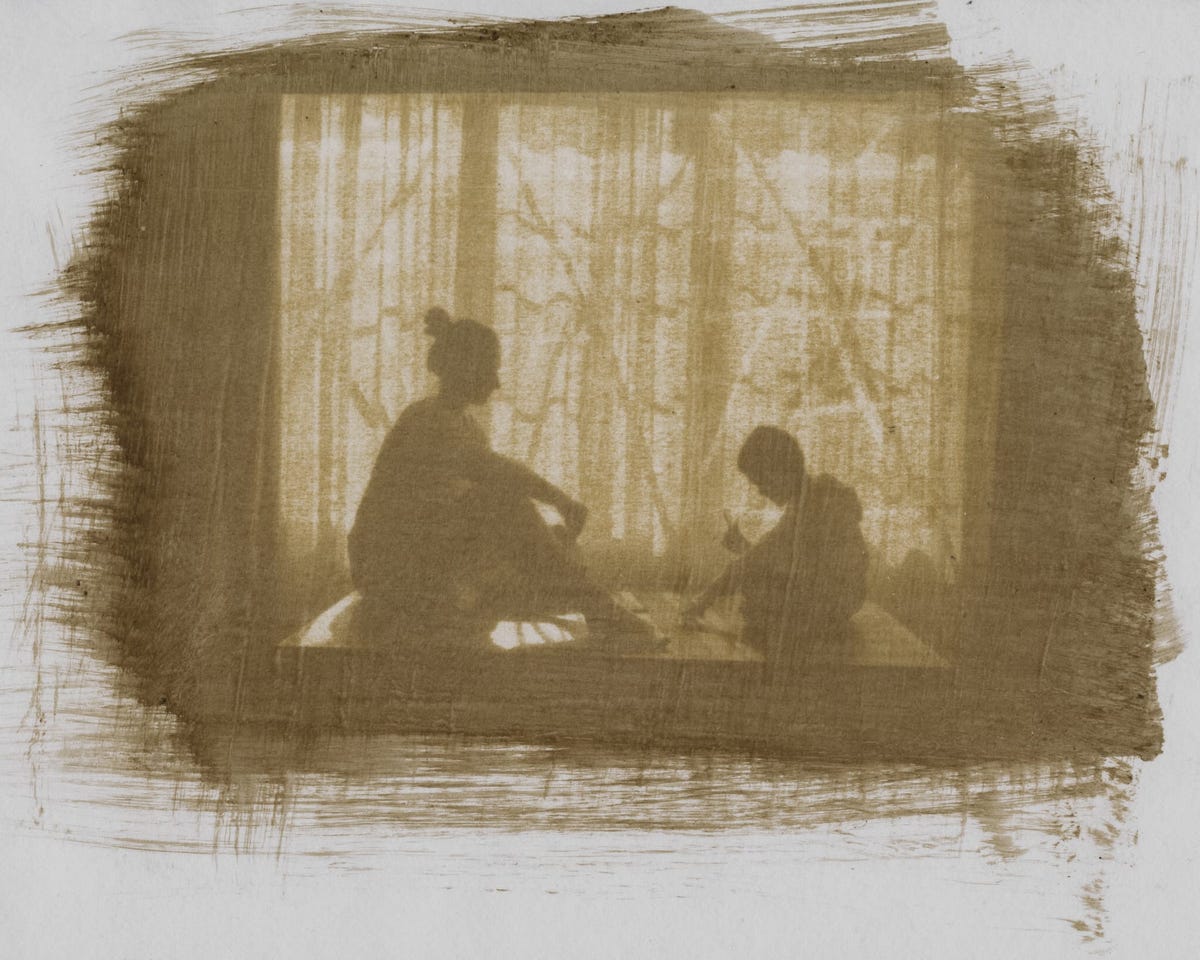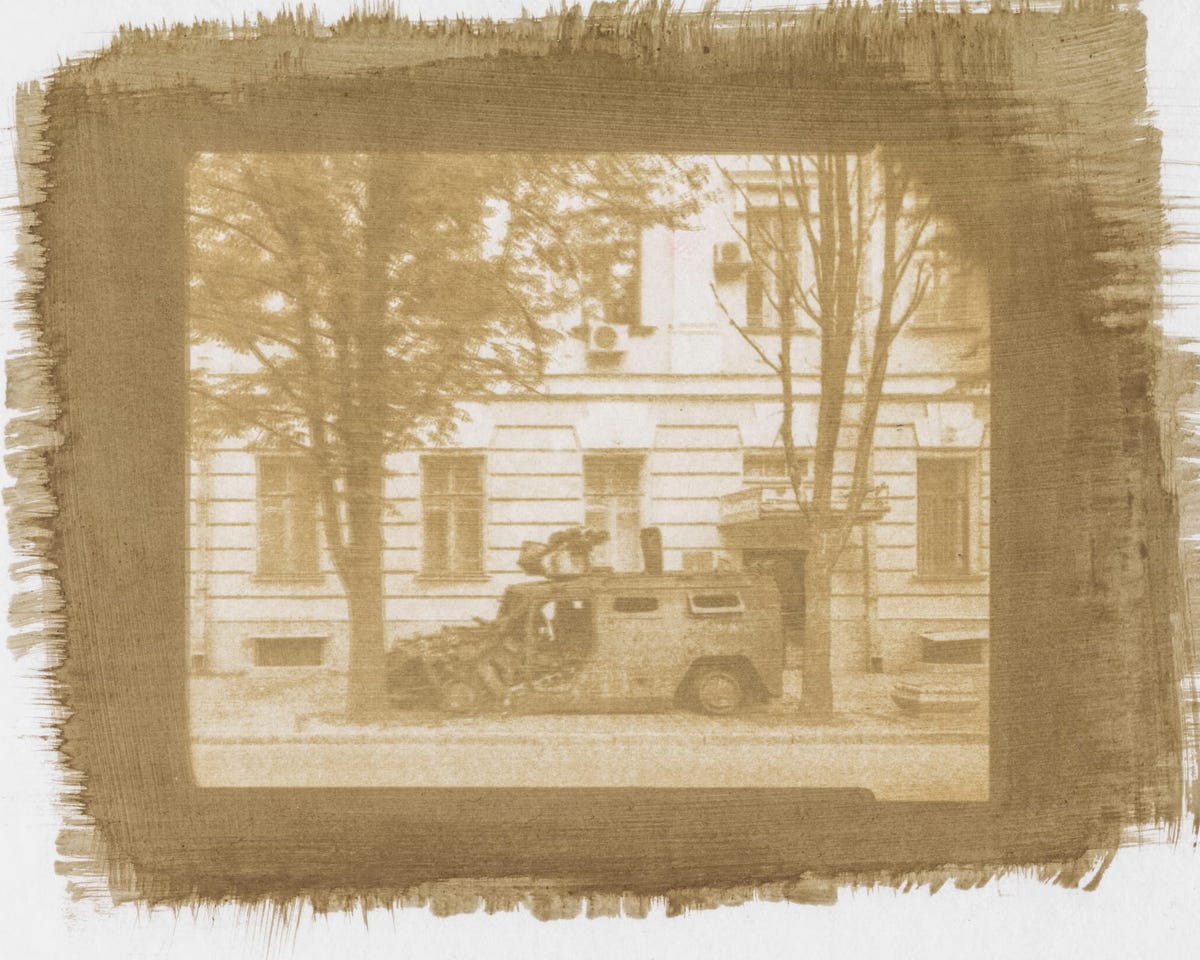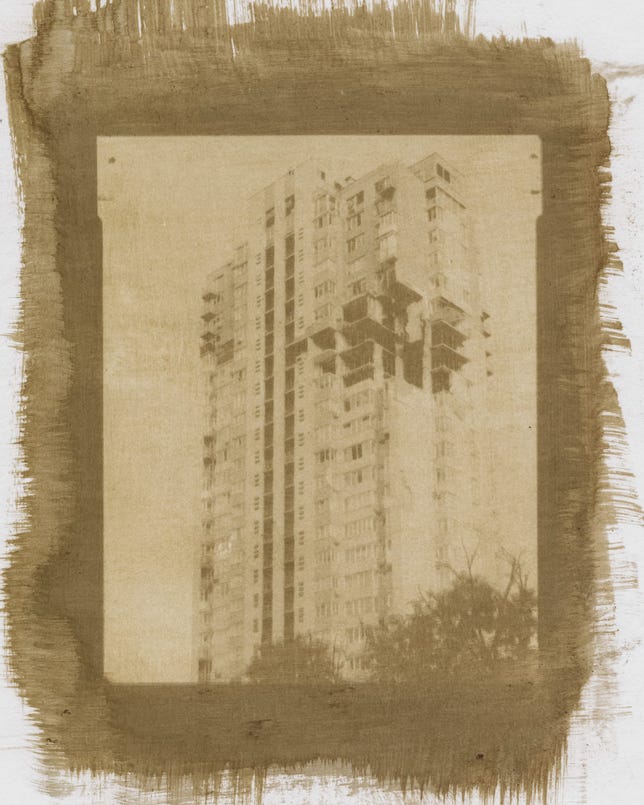Living in Kyiv, Ukraine, during wartime, Valerii Veduta has become accustomed to the daily sounds of airstrike alerts and the sight of tanks and rocket launchers. The artist, however, has what he calls his own “weapon of choice”: photography.
Since Russia invaded Ukraine in February, he’s been documenting his family’s life through a photographic diary shot with a large-format film camera and a tripod. He processes the photos in his bathroom using Ukrainian soil as a pigment to give them a dreamlike, almost nostalgic feel. Then he digitizes them.
The mixed-media images in his War Times Family Album — now being sold as NFTs on digital art marketplace Voice — don’t directly document the invasion and its horrors. Veduta, 39, thinks of them more like a poem about the war’s impact on ordinary people at the intersection of military conflict and everyday life.
The images do have a poetic quality, thanks to gum bichromate, a 19th-century photographic printing process that can produce painterly images from photographic negatives.

Veduta’s print titled Calm Not Calm Day.
Valerii Veduta
In one, titled Calm Not Calm Day, Veduta’s wife and 5-year-old son sit playing cards in front of a window. At first glance, it’s a tranquil domestic scene. But look more closely and you’ll notice crisscrossing lines on the window panes. This is Scotch tape that the family has affixed to the window to prevent glass from flying into the room in the event of shockwaves from an explosion.
Another image, called Library and a Military Vehicle, captures exactly that: a destroyed Russian military vehicle in front of a public library, the ordinary juxtaposed with the anything-but-ordinary in an oddly serene pastiche.
Veduta’s work has appeared in Vogue Italia, Vogue Greece, Vogue Portugal and Harpers Bazaar and on PhotoVogue, Conde Nast’s international database of contemporary photography. The war has disrupted his business and his son’s kindergarten. A missile destroyed a downtown playground where his kid used to play.
“Everything is different, but in a way, now I force myself to do something from ‘normal life’ to feel alive and normal,” the artist says of his photographic series, which is selling on Voice for $300 per NFT (roughly £268, AU$480).

Valerii Veduta’s Library and a Military Vehicle is part of a photographic diary capturing life during war in Ukraine.
Valerii Veduta
The gum bichromate printing process involves coating paper with an emulsion made from powdered chemicals; a dry gummy substance called gum Arabic; and a water-soluble pigment — in Veduta’s case, soil from the ground of his war-ravaged country. When exposed to UV light, the gummy substance hardens, and the leftover bichromate and gum Arabic get washed away. Before it hardens, though, a photographer can brush or reshape the physical texture of the print to add a new element of expressiveness.

An image titled Wound depicts a residential building in Kyiv hit by a Russian missile during the first days of the invasion.
Valerii Veduta
“I find it poetic that I have to use poison (that’s what dichromate is) and soil to create my images, and poison has to be washed away,” Veduta says.
Veduta’s images are among those being sold on Voice as the result of a one-month virtual “NFT residency.” Through stipends and workshops, the art platform for emerging artists guided PhotoVogue artists from 29 countries on navigating the world of Web3, which can be defined in two ways, as my CNET colleague Daniel Van Boom explains.
“The quick, easy description is a blockchain-integrated internet or an internet where cryptocurrencies and NFTs are built into the platforms you use,” Van Boom writes. “The more complicated but more specific way to think about Web3 is an internet owned by users. That’s the dream of crypto boosters, who say the integration of blockchain technology will lead to an egalitarian internet.”
The NFT residency focused on the overarching theme of equity and justice, with art produced touching on topics like the long-term effects of the COVID pandemic on children, the consequences of a recent major oil spill, and, in Veduta’s case, the challenges of living in a war zone. New art from the residency will drop during October and November.
The soil that tints Veduta’s work has mostly come from the same place, but sometimes, as in the case of the bombed-out playground, the dirt directly connects to the image it colors.
“My kid was raised on that playground. It was our spot,” the artist says. “So, I took a photo of a crater and collected soil from there.”
Looking ahead, Veduta hopes for the day when he can use a different pigment to tint his images — clay from the Sivash, a saltwater lake on the Sea of Azov that separates Crimea from Ukraine. Veduta’s parents have a home on the shores of the lake, whose black clay is famous for its healing properties.
“One day,” he says, I am going to be shooting my homeland and printing photos with that healing clay.”
Artists Worldwide Protest War in Ukraine With Paintbrushes and Pixels
Photographer Uses Ukrainian Soil as Pigment in Haunting Images of Life Amid War – CNET
Source: Media Star Philippines


0 Comments